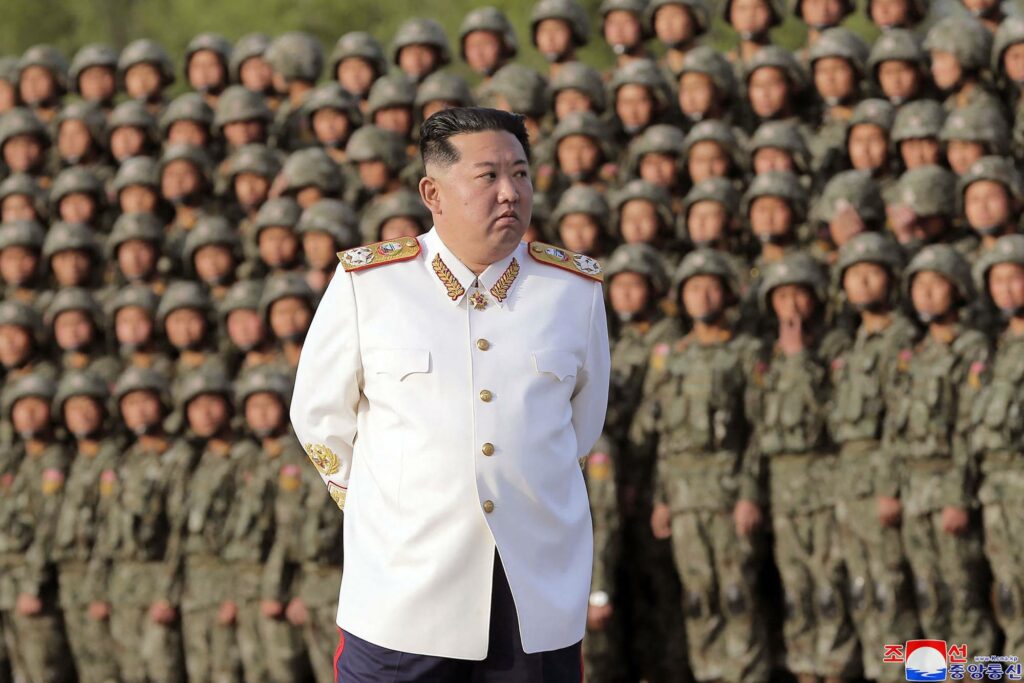North Korea fired multiple short-range ballistic missiles into waters east of the Korean peninsula Thursday, Seoul’s military said, the nuclear-armed country’s first major weapons test since early July.
Leader Kim Jong Un‘s regime has staged dozens of launches this year, part of a testing spree that experts say could be linked to North Korea’s alleged illicit supplying of weapons to ally Russia for use in Ukraine.
Pyongyang has denied any sanctions-busting weapons trade with Russia, but with diplomacy long stalled, it declared South Korea its “principal enemy” this year and recently moved nuclear-capable weapons to border areas.
Seoul’s Joint Chief of Staff said it had detected multiple “short-range ballistic missiles” fired early Thursday morning from Pyongyang into the East Sea, or Sea of Japan.
The missiles splashed down after flying around 360 kilometers (220 miles), the JCS said, adding it had “immediately detected, tracked, and monitored” the launch and was sharing information with allies Tokyo and Washington.
It said the test was “a clear provocation that seriously threatens peace and stability on the Korean Peninsula.”
Japan’s defense ministry also confirmed the missile test, with Prime Minister Fumio Kishida saying the country had “already lodged a protest with North Korea.”
It is Pyongyang’s first ballistic missile test since July 1, and comes days after the isolated country marked a key anniversary celebrating the founding of the ruling regime.
North Korea has regularly launched missiles around September 9, its foundation day, including conducting its fifth nuclear test on the same day in 2016.
A JCS spokesperson told reporters it was possible the Thursday ballistic missile launch could mean the North “tested it for export to Russia.”
North Korea has recently bolstered military ties with Moscow, with President Vladimir Putin making a rare visit to Pyongyang in June, where he signed a mutual defense agreement with Kim.
Experts have long said North Korean missiles are being deployed in Ukraine, and a new Conflict Armament Research report this week employed debris analysis to show “that missiles produced this year in North Korea are being used in Ukraine.”
Flood Damage
The lack of missile launches in recent months was likely due to widespread flooding that has devastated parts of North Korea, Park Won-gon, a professor at Ewha Womans University, told AFP.
Even in August, when the United States and South Korea staged large-scale joint military drills that typically infuriate Pyongyang, Kim did not fire off any missiles, Park said.
The Thursday launch “can be the first step back to their previous pattern,” he added, warning that Kim had pledged satellite launches this year but had not delivered, so this or an intercontinental ballistic missile (ICBM) could be next.
“North Korea has been focusing on low-power tactical missile tests, capable of carrying nukes and attacking South Korea,” Park said.
Pyongyang last month said a record downpour in late July had killed an unspecified number of people, flooded dwellings, and submerged swathes of farmland in its northern regions near China.
38 North, a North Korean analysis program run by the Stimson Centre think-tank, reported on Wednesday that North Korea’s main nuclear test site was damaged by floodwaters.
Satellite imagery showed multiple bridges and command facilities had been washed away.
Relations between North and South Korea are at one of their lowest points in years, with the North recently announcing the deployment of 250 ballistic missile launchers to its southern border.
The North has also been bombarding the South with trash-carrying balloons, including a five-day straight blitz last week.
Seoul’s military said Pyongyang had launched another salvo of trash-carrying balloons late Wednesday, but the majority of them did not make it across the border, likely due to wind conditions.
In response, Seoul has suspended a tension-reducing military deal with Pyongyang and restarted some propaganda broadcasts from loudspeakers along the border.



